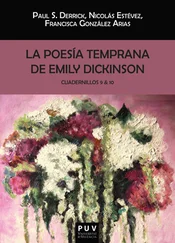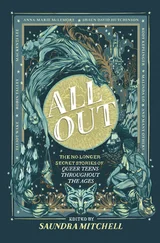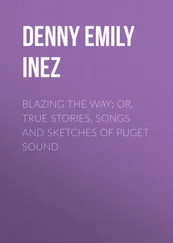The other reason that the state of Louisiana continues to loom so large in our collective imagination is the Great Hoax of 1782. The hoax was orchestrated by a group of planters from the French West Indies who intended to entice capital investment in their enterprises from bankers in Paris and other European cities. They began to spread information about great and growing port cities along the southern coast of the North American mainland, which, they claimed, would soon precipitously increase the trade between the United States, then a recently formed nation, and the islands of the Caribbean. They named these cities after cities in France and even went so far as to have woodcuts and etchings made illustrating the various street scenes and public works then supposedly taking place in them. The artists they hired were talented and they evoked from nothing but their imaginations bustling, vibrant towns inhabited by people from all the nations of the world, mixing and living freely together — a spectacle that at the time had never been witnessed before. Soon it became au courant in the French capital to pepper one’s speech with slang purported to originate in the Gulf cities. Where this slang truly comes from no one knows, though it shows similarities to the Basque language and also to Welsh.
The campaign was a success. The investors in Europe were moved to open their purses, and money flowed to the French island colonies. But another unforeseen effect also resulted from the machinations of the conspirators, which was the increased interest on the part of the United States in acquiring this rich territory adjacent to its own. As we all know, the Louisiana Purchase of 1803 took place a mere twenty years after the planters first gathered together over port and cigars to devise their plan. Once this purchase was made, of course, the Americans soon discovered their error: there were no Gulf cities. Louisiana was a pure fabrication. But so many among the new revolutionary elite had staked their reputations on the purchase of this territory, including of course Thomas Jefferson himself, that they could hardly admit this publicly. To protect the president’s dignity, the fiction was maintained. As it is to this very day.
If, despite our warnings, you travel to the place where Louisiana is supposed to be, you will find nothing but a few placards and signs and a Quonset hut containing an exhibition about the myth. This will doubtless be disappointing and upsetting. One way that Americans sometimes express their negative emotions is by assaulting inanimate objects; for this reason, you might want to kick one of the signs and shout an expletive at the top of your lungs to make yourself feel better. Don’t worry if a group of tourists nearby look over at you disapprovingly; glaring silently is also part of the culture.
After that, do not spend any more time in this place. It will only make your already-bad feelings worse. Instead, we advise you to get back in your car and drive away as quickly as you can within the posted speed limits.
NEVADA
If a garbage can was flat, it would be called Nevada. This is what people in surrounding states say when they wish to disparage the state known variously as the Radiation State, the Dust State, and the Slot Machine State (this last is used only by non-Nevadans seeking to provoke Nevadans to fight them in a bar).
While these names are clearly intended to be pejorative, it must be acknowledged that Nevada is the place to which many of America’s worst nightmares are eventually consigned. It might be more accurately called the Nation’s Unconscious: it is where the American people put the things that they don’t want messing up their lawns. The most important of these are nuclear waste and the sex trade.
An odd confluence between these two domains has been remarked upon recently by a well-known pornographer. In both erotic arousal and radiation poisoning the subject undergoes an experience of melting, as internal boundaries and membranes give way allowing for the delirious loosening and mixing of the body’s tissues and fluids at an ever-accelerating rate. The dermis separates into its many tenuous layers and peels away, shed like a lizard’s scales. The soft tissue becomes tender and swollen as bruises. The limbs lose their rigidity and swim through the suddenly soft air, their motions freed of all consequence, closed off by darkness from any constraint or from the onerous weight of the future until finally the subject itself disperses in death or in “the little death.”
Our pornographer further submits that because Nevada is a desert, a place in which time does not appear to pass, we have reserved it as the place in which we collapse gently in on ourselves.
Most of the state is uninhabitable because it lacks water. Visitors slide through it in silver cars on the single great highway to traverse its northern expanse, and they get out to gaze with rapt horror at the emptiness, thinking: If you wanted to die, all you would have to do is choose a direction and walk. Numerous attempts to establish towns along this highway have failed, and their remains can be seen at the side of the road, where off-ramps lead to nothing but shuttered and derelict buildings, mostly convenience stores and gas stations. These buildings take several years to be covered by dust completely, and it is possible to judge the building’s age by how far up the front door the sand has crept. On our most recent journey through Nevada we saw many buildings in this state of half-submersion, but we did not stop long enough to check their age. There is a slight risk when you do this that you will want to lie down inside one of them until you are covered up by drifts of pale gold earth. If you do this you will not reach the last and most amazing stop on your journey: California.
CALIFORNIA
The beauty of California is famous throughout the world. The sun shines almost every day. There are yellow and brown beaches where the glass-blue ocean shatters on the shore over and over and the sea-birds riot in the air above. The mountains are a gray spine shouldering through the center of the state, offering magnificent views. There is the dry, medicinal smell of eucalyptus and along the northern coast there are the great trees, large as cetaceans, with wood the color of bricks or blood and sharp needles all over to ward off predators. Scientists have recently discovered that these trees seem to be sending a gentle but persistent signal upward into the sky on a frequency that human beings can hardly detect even with our most advanced instruments, but what the signal says they cannot yet decipher.
In spite of all this beauty, there is another, darker side to California that lurks beneath the pleasant surface and occasionally pushes its way up into the light. If you go to the border in the south you will see an example of what we are referring to. For many years, there was a fence that ran along the border to keep people from coming into the country to look for work without the proper papers or permission. A few years ago, this fence was taken down and an invisible, electric barrier erected in its place. If a person tries to cross the border, in spite of the many warnings posted in a multitude of languages, he now receives a huge electric shock, strong enough to send him sailing backward through the air onto his own side of the line. For a while after El Oscuro (as the barrier is known on the Mexican side) first went up, there were protests. People suffered damage to their nerves because of the strong current; some young children who could not read the warning signs were hurt. But instead of taking down the barrier, the government put up a loudspeaker system so that those too young or not fortunate enough to be able to read could be warned to keep away. Since then there have been fewer injuries and the protests have died down as people have become distracted by other things supposedly more pressing.
Читать дальше












